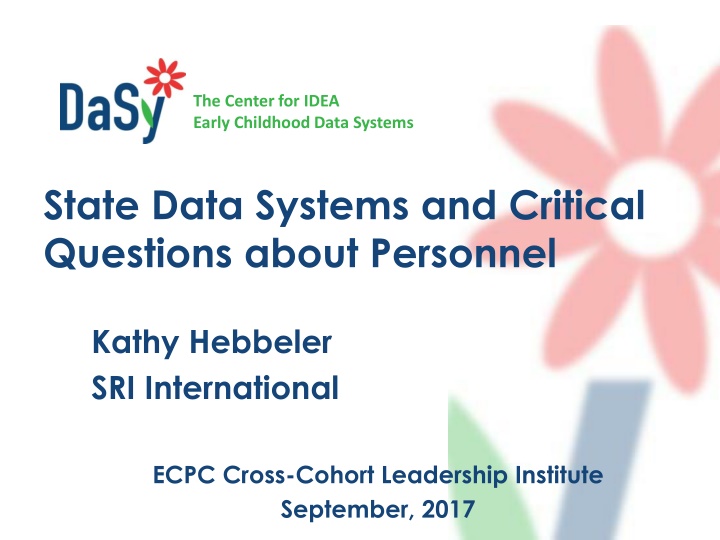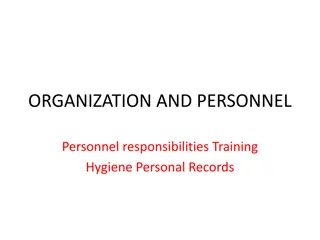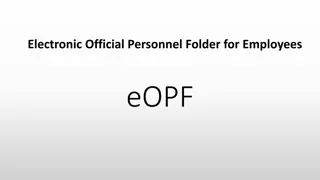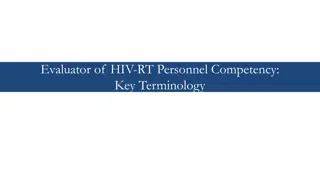
Building a Data System for Early Childhood Programs
Explore the importance and functions of a data system in early childhood programs, including collecting data, program improvement, accountability, and knowledge development. Learn about the critical questions that drive the design and implementation of such systems.
Download Presentation

Please find below an Image/Link to download the presentation.
The content on the website is provided AS IS for your information and personal use only. It may not be sold, licensed, or shared on other websites without obtaining consent from the author. If you encounter any issues during the download, it is possible that the publisher has removed the file from their server.
You are allowed to download the files provided on this website for personal or commercial use, subject to the condition that they are used lawfully. All files are the property of their respective owners.
The content on the website is provided AS IS for your information and personal use only. It may not be sold, licensed, or shared on other websites without obtaining consent from the author.
E N D
Presentation Transcript
The Center for IDEA Early Childhood Data Systems State Data Systems and Critical Questions about Personnel Kathy Hebbeler SRI International ECPC Cross-Cohort Leadership Institute September, 2017
The need to build a data system The hardware, software, and other applications that enable Part C and Section 619 programs to collect data about children, families, workforce, and/or program characteristics (e.g., program quality), as well as the analysis, reporting, and data use practices associated with those data. System for data http://dasycenter.org/resources/dasy-framework/ http://dasycenter.org/resources/dasy-framework/ 2
Functions of a Data System/Uses of Data Program Improvement Accountability Program Operations Knowledge Development 3
Functions of a Data System/Uses of Data Report to funders and other stakeholders to support wisdom of Program Improvement investment, e.g., federal and state reporting Accountability Program Operations Knowledge Development 4
Functions of a Data System/Uses of Data Program Improvement Identify strengths and Accountability shortcomings; addressing shortcomings Program Operations Knowledge Development 5
Functions of a Data System/Uses of Data Program Improvement Accountability Improve effectiveness and/or efficiency day-to- day management and Program Operations Knowledge Development implementation 6
Functions of a Data System/Uses of Data Program Improvement Accountability Contribute to general understanding of service Knowledge Development Program Operations delivery and outcomes 7
Questions are the drivers What data elements to collect What analyses to run What tables to produce Need to design and build the data system based on questions 8
Questions are the drivers What data elements to collect What analyses to run What tables to produce Need to enhance the data system based on questions 9
What are the characteristics of the work force? 11
National Early Intervention Longitudinal Study (NEILS) Nationally representative sample of 3,338 children and families who received early intervention Began EI in 1997 or 1998 Data on the professionals who worked with the family in the first 6 months of service https://www.sri.com/work/publications/national-early-intervention-longitudinal-study-neils-final-report 12
Who works with EI families? One professional had lots of titles: special educator, child development specialist, infant development specialist, early interventionist How many providers? 22% Two 23% Three 13% Six or more Only 6% did not receive services from one or more of following: Special educator/child development specialist, SLP, OT, or PT 13
Characteristics of the professionals Of all families who worked with this professional, X% had a provider who was .. Sphere of influence 61% of families worked with a child development specialist or special educator; 38% with a PT Implications for state data system: need to be able to link child data to personnel data 14
Characteristics of EI professionals Female Child Development Specialists - 92% OTs - 98% White SLPs 90%; PTs 89%; Nurses- 79%) Any age Nurses, Special educators were older SLPs and Service coordinators were younger Not likely to speak another language 19% for nurses which was the highest 15
Characteristics of EI professionals Highly educated Children/families in EI served by professional with a masters degree or higher 93% SLPs 79% Social workers 70% Special educators 53% Child development specialists 51% Service coordinators 44% PTs/PT Assistants 37% OTs/OT Assistants 30% Nurses 16
The Profession of the Providers SLP, PT, OT, Nursing, Social work well defined field Had undergraduate, graduate degree or both in the field and a license Service coordinators, child development specialists, special educators came from various backgrounds Child development specialists: Psychology 16% Child development 13% Early childhood education 11% 17
Why would you want to know the characteristics of the work force? What action could you take? Age? Race/Ethnicity? Preparation? 18
Professionals have knowledge and skills to implement evidence-based practices Professionals implement evidence-based practices Good Other factor outcomes for children and families Other factor 19
What kind of data are states collecting on personnel? 20
http://dasycenter.org/state-of-the-states-2016/workforce-level-data-systems/http://dasycenter.org/state-of-the-states-2016/workforce-level-data-systems/ 21
About the ITCA 2015 Data Survey Data collected through online survey Conducted survey in 2015 Sent to Part C Coordinators in all states and territories 47 states responded Percents are percent of states 23
Early Intervention At least one data system with data on work force member 72% Unique identifier for the work force member 31% Ever linked work force data to child level data 49% 24
Early Intervention The majority of states have licensure date. Not many states have demographic data. Age 32% Race/ethnicity 21% Licensure 68% Highest Education Level 43% State CSPD requirements 40% Employment start date 47% Employment status 47% Wages/Benefits 21% 25
About the DaSy Part B 619 survey Data collected through online survey Conducted survey in mid 2013 and fall 2015 Sent to 619 coordinators in 56 states and jurisdictions, group effort encouraged Response rates 2013: 96% (54/56) 2015: 93% (52/56) 89% (51 states) answered the survey both years Percents are percent of states. 26
Early Childhood Special Education Majority of states have at least one data system with data on preschool special education teachers. Little change over time. 2013 82% 14% 4% 2015 79% 14% 7% Has data system Does not have data system Missing 27
Early Childhood Special Education Majority of states have at least one data system with data on individual related services personnel 2013 73% 23% 4% 2015 70% 23% 7% Has data system Does not have data system Missing 28
Early Childhood Special Education The majority of states have at least one data system with data on individual general education teachers working with children with IEPs, and there has been little change over time. 2013 70% 26% 4% 2015 70% 23% 7% Has data system Does not have data system Missing 29
Early Childhood Special Education Most states reported using a unique identifier for workforce members. 2013 68% 29% 4% 2015 64% 27% 9% Unique ID No Unique ID Missing Seven states reported that they used the same unique workforce IDas Part C. 30
Early Childhood Special Education More states have data on special education teachers than the other professions. Licensure is the most common data across states. 61% 77% Demographics 54% Licenses/certifications 69% 52% 67% 45% 71% Employment information Wages 38% 64% 39% 62% 34% 66% Professional Development 25% Education 59% 18% 53% 31
Early Intervention The majority of states have licensure date. Not many states have demographic data. Age 32% Race/ethnicity 21% Licensure 68% Highest Education Level 43% State CSPD requirements 40% Employment start date 47% Employment status 47% Wages/Benefits 21% 32
An effective system must coordinate and address state needs for both the number of personnel as well as the degree to which those personnel are supported and qualified for their roles in the service system ECTA System Framework How does leadership build a state system that does that? With Data How does leadership know if the state system does that? 34
PN2 (There is a plan..) e. The leadership team monitors both the implementation and effectiveness of the activities of the CSPD plan. PN7 ( statewide system for inservice..) d. The inservice personnel development component of the CSPD plan is guided by updated needs assessment of the capability of the work force in relation to the desired knowledge and skill competencies. PN9 (..recruitment and retention )c. The effectiveness of strategies is tracked, reviewed annually, and updated as appropriate based on data, current research, and stakeholder input. 35
PN11. The evaluation plan for CSPD includes processes and mechanisms to collect, store, and analyze data across all subcomponents. c. The state has the capacity to support data collection, management, and analysis for personnel qualifications, needs assessment, preservice and inservice personnel development, and personnel supply and demand. d. Quality review processes for data collection, verification, storage and management, and analysis are defined and implemented regularly. e. Personnel data are linked to child and family outcomes. 36
PN12 (evaluation plan is implemented) c. Data are collected on personnel variables, such as personnel development participation, acquisition of content, and performance of competencies and those data are examined in relation to relevant child and family outcomes. d. Data are collected on personnel development variables, such as units of personnel development, type and amount of support (e.g., observational feedback, coaching, practica and content), and those data are examined in relationship to relevant child and family outcomes 37
Bottom line: High quality data on personnel is essential to achieving a system with high quality personnel 38
To be useful, data must be Current Trustworthy Accessible 39
How accurate/trustworthy do you data need to be? There is always error in measurement. As accurate as you need them to be for the kind of decisions you plan to make from them What does it cost to get the data 100% accurate? $X to get to 95% accuracy (?) 2 times $X to get to 99% accuracy (?) Is it really worth it? Rarely. Depends on the implications for the decision 40
Building a culture of data use CQs are starter list of questions. Goal: Data conversations permeate your agency s day to day work DEC Recommended Practices L12. Leaders collaborate with stakeholders to collect and use data for program management and continuous program improvement and to examine the effectiveness of services and supports in improving child and family outcomes. https://divisionearlychildhood.egnyte.com/dl/tgv6GUXhVo 41
Examples of Simple Data Conversations Let s look at some 619 data reported to OSEP States report on total number on personnel who are employed, highly qualified, not highly qualified. 42
Percent of Employed Teachers of 3-5 Year Olds Who Are Highly Qualified by State, 2014-15 100% 90% 80% 70% 60% 50% 40% 30% 20% 10% 0% Source: U.S. Department of Education, EDFacts Data Warehouse (EDW): IDEA Part B Personnel Collection, SY 2014-15. 43
Number of 3 to 5 years olds per Number of 3 to 5 Teacher FTEs by State, 2014-15 100 98 90 80 78 70 61 60 50 38 40 15 151516 1617 17 17 17 181819 19 1920 20 20 2021 2122 22232325262727 27 28 28 28 2830303233 30 20 10 1011 1112 12 10 5 0 44 Note: State with a ratio of 160 to 1 not shown.
Is there a relationship between percent served and the child to teacher ratio? 45
Number of 3 to 5 years olds per Number of 3 to 5 Teacher FTEs for Each State, 2014-15 98 100 90 78 80 70 61 60 50 38 40 10 1011 1112 1215 151516 1617 17 17 17 181819 19 19 20 20 20 2021 2122 22232325262727 27 28 28 28 2830 303233 30 20 10 5 0 States serving the highest percentage of 3 to 5 population shown in yellow . Correlation between percent served and ratio = .15 Correlation between number served and ratio = -.01 46
Not everything has to be in one of the big state data systems Some things are time limited (e.g., an initiative). Some things are spot checks. Implementing practice based coaching Continuous quality improvement vs. a one time evaluation. For the data elements you don t have: How many of the data elements do you need regularly? How many do you need intermittently? 48
Personnel Data System: Vision for Every State 1. Comprehensive set of data elements on personnel (demographics, education, employment start date, additional training, etc.). 2. All of the data are trustworthy. 3. All of the data are current. 4. Coordinator has reasonably easy access to the data and can get analysis completed when they are needed. 49
For more information Visit the DaSy website at: http://dasycenter.org/ Like us on Facebook: https://www.facebook.com/dasycenter Follow us on Twitter: @DaSyCenter 50






















